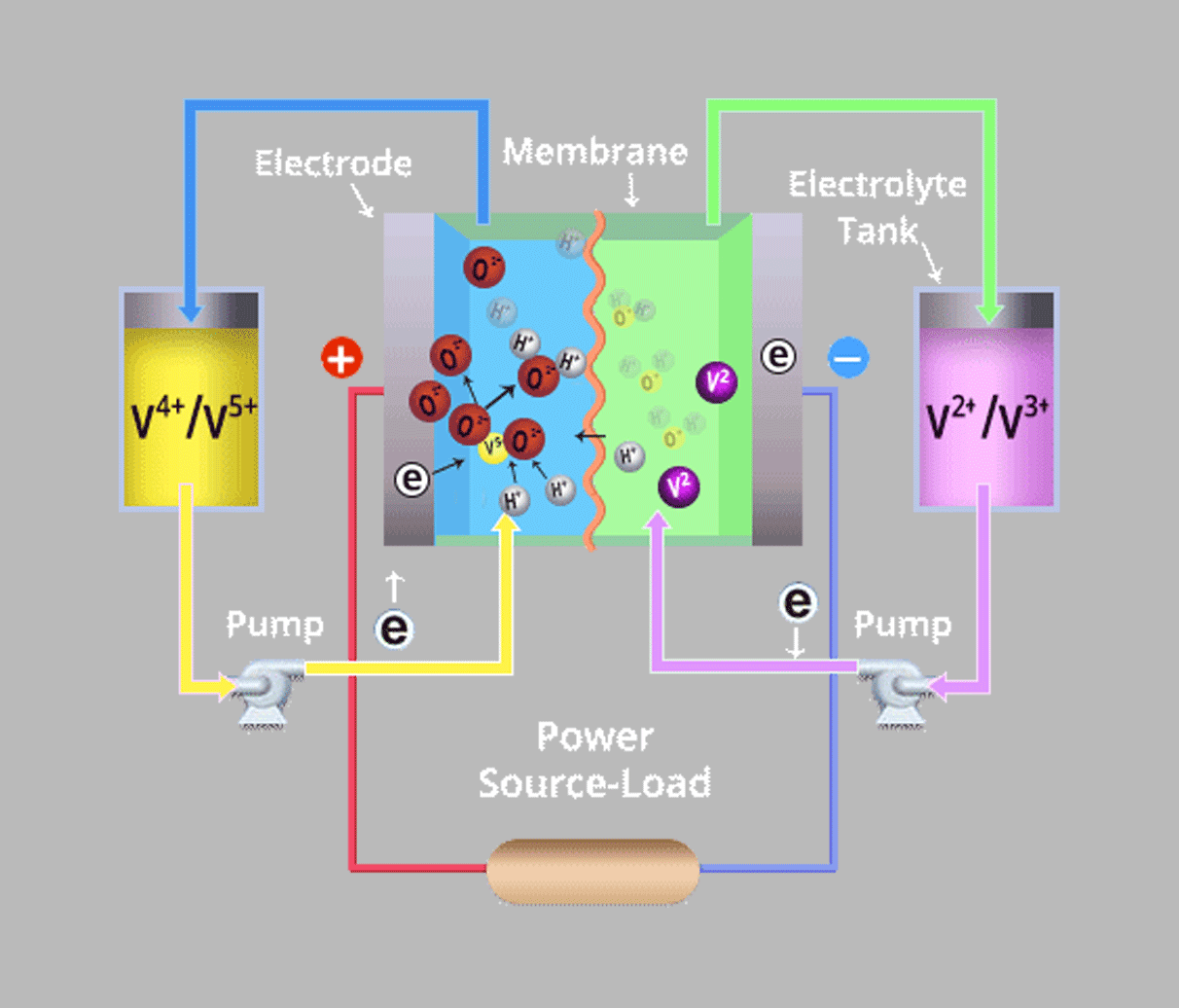Solving Long Duration Energy Storage with safe, recyclable Vanadium Batteries
In North West Queensland, QEM has a globally significant resource with the potential to produce high purity vanadium electrolyte required for this battery technology.
In March 2022, the U.S. Department of Energy acknowledged the potential of vanadium flow batteries, stating,
“This emerging grid-scale storage technology has great commercial and energy security potential… Unlike lithium-ion batteries, vanadium flow batteries store energy in a non-flammable, liquid electrolyte and do not degrade with cycling. They hold the promise of 10-hour duration storage, tens of thousands of cycles, and even up to 25 years of service life.”
Located in North West Queensland, QEM hosts a globally significant resource capable of producing high-purity vanadium pentoxide. This high-grade mineral is essential in manufacturing safe, long-lasting, and efficient vanadium redox flow batteries (VRFBs).
Vanadium has the unique characteristic of having four different stages of oxidation.
In each of the four stages, Vanadium contains a different electrical charge and is therefore used as a catalyst to store energy. In order to convert this electrical energy into a chemical compound, it requires two electrodes, called a “stack”.
This stack consists of many cells; each one contains two half-cells that are separated by a membrane. In the half-cells, the electrochemical reactions take place as soon as electrolytes flow past the membranes. Hence, the reduction or oxidation leads to the charging or discharging of the battery.
The stack is connected to two different tanks and one electrolyte tank contains the positive V4+ and V5+ redox couples, the other the negative V2+ and V3+ redox couples. These energy-carrying liquids circulate through the stack by pumps.
In VRFB batteries, these materials are liquid and have different electric charges. Both liquids (V2+/V3+ and VO2+/VO2+) are pumped into a tank and a thin membrane separates the two liquids, however, the liquids are able to react and an electric current is generated.
Vanadium is used because it can convert back and forth from its various different states which carry different positive charges. The risk of cross-contamination is eliminated as only one material is used, which makes VRFBs safer, as the two liquids don’t mix causing a sudden release of energy.


As of 2022, over 200 VRFB installations are actively powering regions worldwide. According to a white paper by Guidehouse Insights, the VRFB market is set for significant growth due to rising demand for long-duration energy storage, crucial for optimising renewable power generation from wind and solar sources.
You can view Vanitec’s list of installations using the button below.
VRFBs present a breakthrough solution for grid services, offering superior lifecycle potential and high energy capacity, which translate to extended discharge times.
Their inherent ability to scale power and energy independently makes VRFBs a robust, long-term solution for off-grid power systems and microgrids. These systems support a diverse range of end-users, from residential and commercial to military and remote rural areas, particularly in expansive countries like Australia.
Quoting Bloomberg NEF, “We see $548 billion being invested in battery capacity by 2050, two thirds of that at the grid level and one third installed behind-the-meter by households and businesses.”
With unlimited storage capacity, long battery life, low maintenance requirements, and an almost non-existent environmental footprint, VRFBs have emerged as an optimal solution for efficient energy storage and access.
VRFBs can significantly reduce Australia’s reliance on fossil fuels, paving the way for reduced pollution and CO2 emissions.
Building a Renewable Future with Vanadium Redox Flow Batteries (VRFB)



